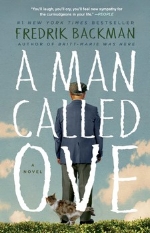Killing Commendatore Haruki Murakami (2017)
Translated from the Japanese by Philip Gabriel and Ted Goossen (2018)
No, this is not a murder mystery. It’s more . . . well, it defies categorization, but maybe it’s an exploration of how our inner lives of thought can transform our external lives of action in puzzling but sometimes pleasing ways.
The unnamed narrator of this massive novel is a thirty-something artist, a fairly successful painter of workmanlike portraits, mainly for corporate executives who want their likenesses on the walls of their headquarters. When the narrator’s wife of six years unexpectedly asks for a divorce, he dejectedly takes off on an impromptu tour of northern Japan for several weeks and then settles, alone, into a rental house in the mountains near Odawara, in central Japan. This house is owned by the artist Tomohiko Amada, now in a nursing home with dementia, who garnered fame creating traditional Japanese scenes on his canvases. The odd characters who accrete to the tale include an enigmatic tech entrepreneur (Menshiki), an adolescent girl, the girl’s aunt, and, most startlingly, a two-foot tall “Idea” named Commendatore, who comes to life from out of a painting by Amada. This painting, which the narrator discovers in his rental home, depicts a scene from the Mozart opera Don Giovanni. Got all that?
The characters move through actual places in Japan, and the story progresses primarily through dialogue, which is rendered in idiomatic American English. Western readers can get to feeling comfortable with this dialogue, and even more comfortable because of the many overt and lightly veiled references to European literature, art, and classical music, especially the opera canon. It’s all rooted firmly in realism until—bam—Commendatore appears to the narrator, trying to guide him through his dual crises of marriage and of artistic authenticity. Some examples of Commendatore’s pronouncements:
“There are plenty of things in history that are best left in the shadows. Accurate knowledge does not improve people’s lives. The objective does not necessarily surpass the subjective, you know. Reality does not necessarily extinguish fantasy.” (301)
“Cause and effect are hard to separate here. Because I took the form of the Commendatore, a sequence of events was set in motion. But at the same time, my form is the necessary consequence of that very sequence.” (539)
The character Menshiki may also have been sent to the narrator as a mentor, since he has some revelatory lines:
“The best ideas are thoughts that appear, unbidden, from out of the dark” (203)
“Sometimes in life we can’t grasp the boundary between reality and unreality. That boundary always seems to be shifting. As if the border between countries shifts from one day to the next depending on their mood. We need to pay close attention to that movement, otherwise we won’t know which side we’re on.” (206)
Perhaps Killing Commendatore was not the wisest choice for my initial foray into the world of the prolific novelist Murakami, but I was mesmerized for most of its 681 pages, as the narrative drifted one way and then another. I did struggle with some of Murakami’s elements of the supernatural, especially the narrator’s passage across subterranean Stygian rivers and through murky, stifling tunnels, which may or may not be metaphorical. But Murakami always returns to the quotidian, often with graceful language like this: “I went to the fridge and drank some cold mineral water straight from the bottle and managed to chase away the dregs of sleep that remained like scraps of clouds in the corners of my body.” (177)
If you’re willing to let your mind embrace the inexplicable for a while, Killing Commendatore may provide insights into human relationships as well as into creative processes. As Menshiki proclaims, “’There are some things that can’t be explained in this life . . . and some others that probably shouldn’t be explained. Especially when putting them into words ignores what is most crucial.’” (593)

















